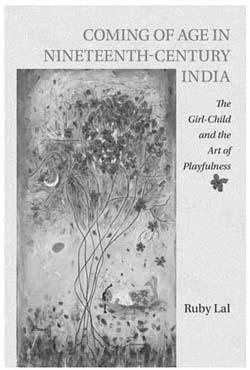In her remarkable work, Secluded Scholars: Women’s Education and Muslim Social Reform in Colonial India (Oxford University Press, 1999), Gail Minault speaks of the ‘daughters of reform’ who contributed in multiple ways to the social and political movements in India, more than most acknowledged earlier. She goes on to show how significant an agency women exercised in the social world of South Asian Islam. Ruby Lal broadens this canvas with the trope of ‘playfulness’ with which the ‘girl-child’ in the nineteenth century negotiated ‘the structures of power’ within ‘the margins of history, and politics, of the school and the household— as of all regulated machines—that the greatest possibilities of play lie’ (p. 207). The figure of the girl-child and woman, shows Lal, was at the helm of the women’s question. She argues that the ‘making’ of the woman was ‘a male project, regularly conceived and promoted in terms of a male universal’, but the ‘becoming’ a woman ‘was always a product of a greater negotiation’ (p. 23).

Female Subject and Pursuit of Playfulness
M. Raisur Rahman
COMING OF AGE IN NINETEENTH-CENTURY INDIA: THE GIRL-CHILD AND THE ART OF PLAYFULNESS by Ruby Lal Cambridge University Press, New Delhi, 2015, 229 pp., 895
October 2015, volume 39, No 10
